Genus species:
Falco sparverius
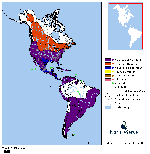
Enlarge Map
External Sites:
Cornell
USGS
Image Search
Commonly seen perching on wires along roads. (Commonly seen between Velarde and Alcalde)
Note dark vertical bars on cheek.
Sometimes seen "kiting" over fields while hunting. (A kiting bird is flapping while not moving up, down or forward.)
Male is pictured.
Number of Individuals Observed:1
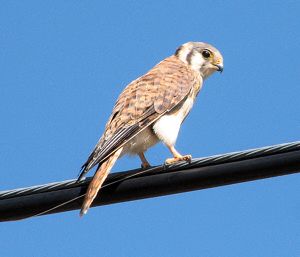
Rinconada
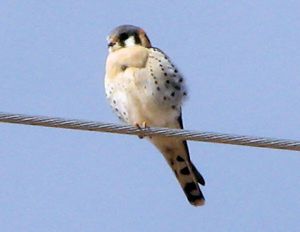
Rinconada
Zenaida macroura
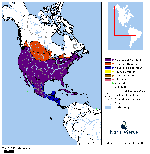
Enlarge Map
External Sites:
Cornell
USGS
Image Search
Note long, pointed tail which shows white edges when landing.
Call is a soft, slow "who-AH, who, who, who" heard during the day. (Commonly mistaken for an owl. Note: Owls usually do not call during daylight hours)
Number of Individuals Observed:6
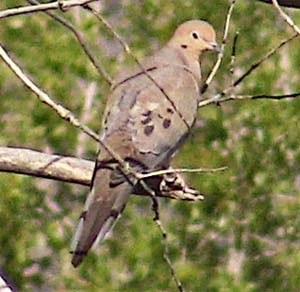
El Bosque
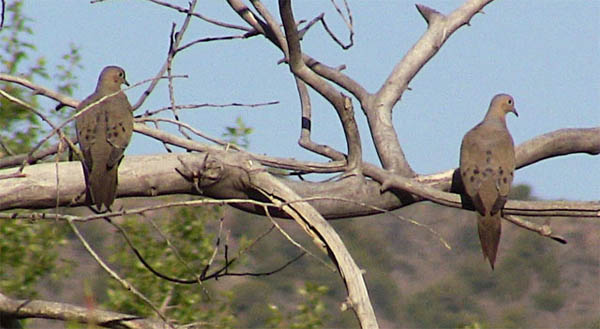
El Bosque
Trochilidae (gen, sp)
Black-chinned
(Archilochus alexandri)
or
Broad-tailed
(Selasphorus platycercus).
Number of Individuals Observed:3
Selasphorus platycercus
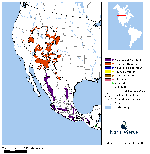
Enlarge Map
External Sites:
Cornell
USGS
Image Search
One of only two hummingbirds that regularly breed here.
In the right light, male's throat is red.
Often appears plumper and rounder than the Black-chinned Hummingbird.
Male's wing make a distinctive, loud buzz in flight.
Male is pictured. Female has plain throat.
Number of Individuals Observed:3
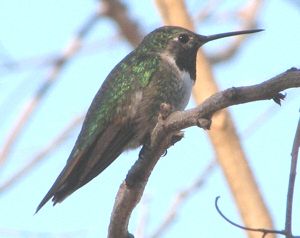
Dixon
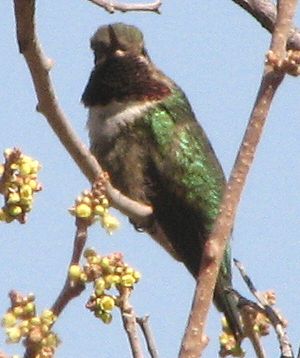
Dixon
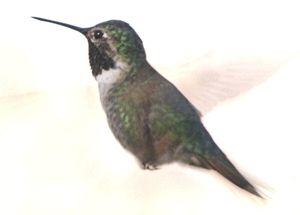
Dixon
Picadae (gen, sp)
Male.
Extensive red on head suggests Red-naped Sapsucker, Ladder-backed Woodpecker or Acorn Woodpecker.
Ladder-backed eliminated by lack of black and white barring on back.
eBird data: Acorn Woodpecker rare in this area.
eBird data: Highest probability = Red-naped Sapsucker which has been observed in this area during all summer months.
Number of Individuals Observed:1
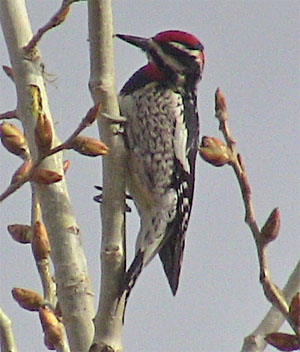
Red-naped Sapsucker (Orilla Verde) Enlarge
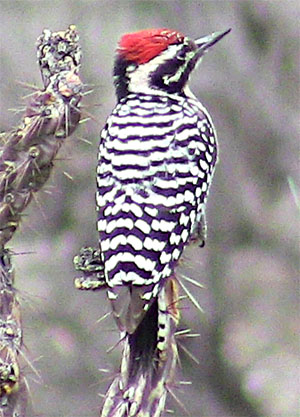
Ladder-backed Woodpecker (Rinconada) Enlarge
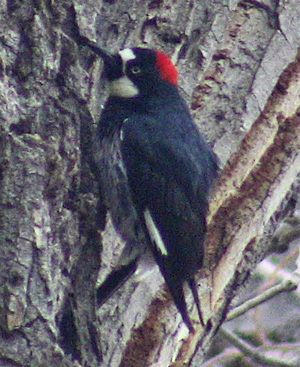
Acorn Woodpecker (Pilar) Enlarge
Contopus sordidulus
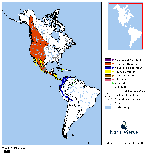
Enlarge Map
External Sites:
Cornell
USGS
Image Search
A fairly plain flycatcher that says its name: a buzzy "pee-wee".
In some postures can look like an Empidonax genus flycatcher, without the characteristic Empidonax white eye-ring.
Usually perches in trees or posts at mid to low levels.
Number of Individuals Observed:2
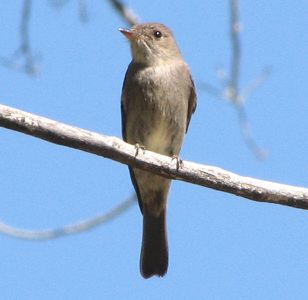
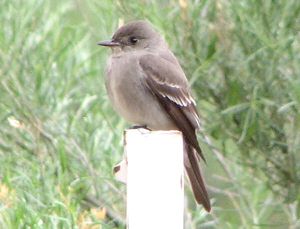
Sayornis saya
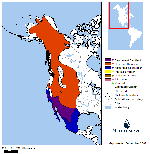
Enlarge Map
External Sites:
Cornell
USGS
Image Search
Usually seen on posts or single stalk plants in agricutural areas "hawking" insects.
It's call is a slow, plaintive, downward slurred "pee-ee". At close range, may hear "pit,pee-ee".
Distinctive peach-colored belly.
This species regularly builds nests under people's portales.
Number of Individuals Observed:1
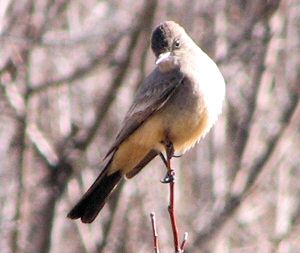
Rinconada
Vireo plumbeus
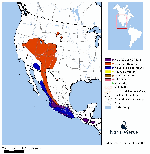
Enlarge Map
External Sites:
Cornell
USGS
Image Search
Number of Individuals Observed:1
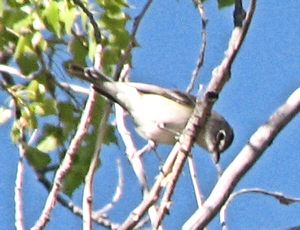
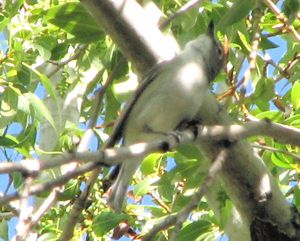
Aphelocoma californica
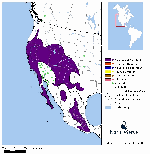
Enlarge Map
External Sites:
Cornell
USGS
Image Search
Note white throat and faint white eyebrow.
Also brownish-gray back.
Distinguished from the Pinyon Jay by longer tail and solitary behavior.
Number of Individuals Observed:2
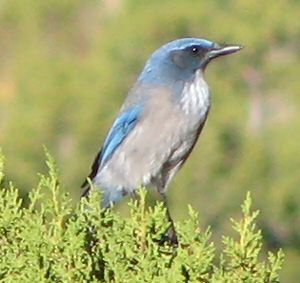
Arroyo la Mina
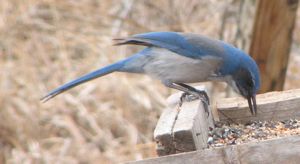
Cañoncito
Corvus corax
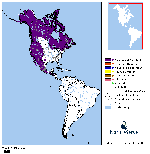
Enlarge Map
External Sites:
Cornell
USGS
Image Search
By sound, a throaty chortle or shout.
In flight, the tail often appears wedge shaped.
Ravens are often solitary, but sometimes appear with a few other individuals.
Often soars like a hawk. Crows do not.
Bill is thick and heavy. The throat is shaggy compared to the Crow.
Breeding pairs perform synchronized flight high overhead.
Number of Individuals Observed:2
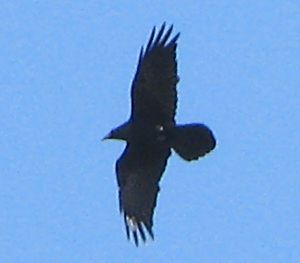
El Bosque
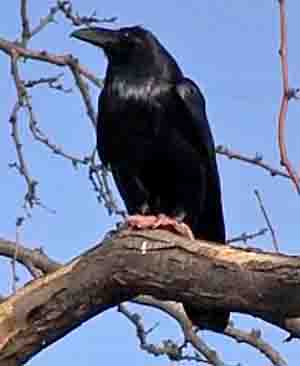
Camino de los Marquez, Santa Fe
Hirundidae (gen, sp)
Either
Northern Rough-winged
(Stelgidopteryx serripennis)
or
Violet-green
(Tachycineta thalassina)
or
Cliff
(Petrochelidon pyrrhonota).
Number of Individuals Observed:2
Tachycineta thalassina
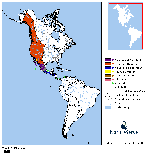
Enlarge Map
External Sites:
Cornell
USGS
Image Search
All white below, with white wrapping up the sides of the rump as shown in the upper individual in the lower photo.
In right light, the back reveals brilliant violet and green colors.
Number of Individuals Observed:1
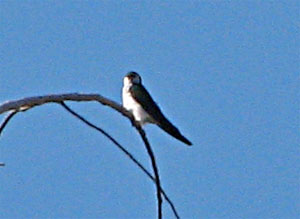
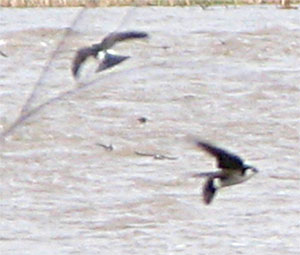
Stelgidopteryx serripennis
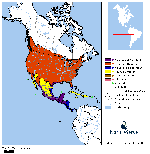
Enlarge Map
External Sites:
Cornell
USGS
Image Search
Number of Individuals Observed:1
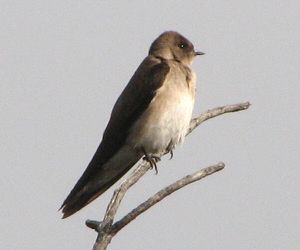
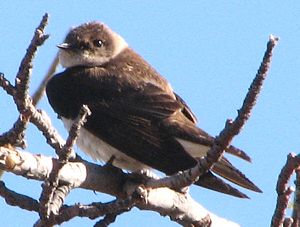
Poecile atricapillus
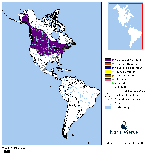
Enlarge Map
External Sites:
Cornell
USGS
Image Search
During breeding season, gives a high descending two pitched
fee-bee.
Number of Individuals Observed:4
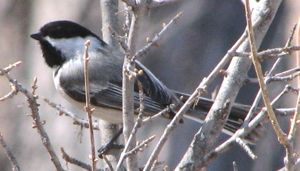
El Bosque
Baeolophus ridgwayi
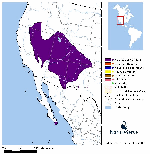
Enlarge Map
External Sites:
Cornell
USGS
Image Search
Some of its vocalizations similar to Chickadee.
Often detected by soft woodpecker-like tapping on branches.
Number of Individuals Observed:3
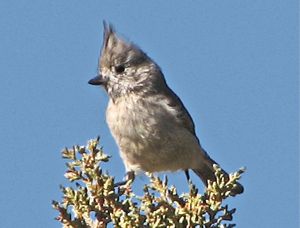
Camino Lejo, Santa Fe
Psaltriparus minimus
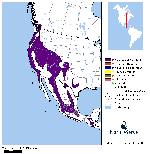
Enlarge Map
External Sites:
Cornell
USGS
Image Search
Usually travels in groups of 10-20 individuals, constantly moving from bush to bush feeding.
Flocking birds constantly make varied twittering sounds.
Number of Individuals Observed:5
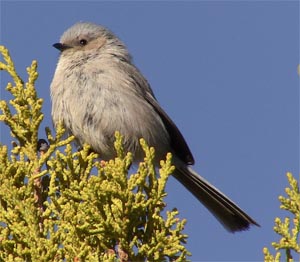
Camino Lejo, Santa Fe
Sitta carolinensis
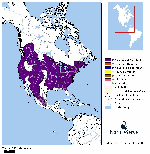
Enlarge Map
External Sites:
Cornell
USGS
Image Search
Relatively long, sharp bill.
Only local species that walks down tree trunks upside down.
Often heard at a distance: Rapidly repeated nasal "huh". Usually 5-8 sounds, all at same pitch.
Number of Individuals Observed:1
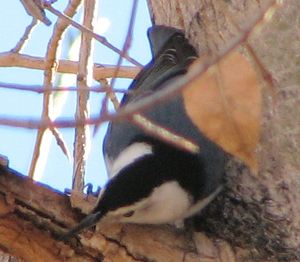
El Bosque
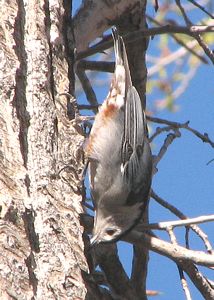
El Bosque
Thryomanes bewickii
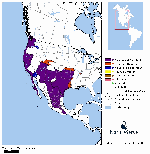
Enlarge Map
External Sites:
Cornell
USGS
Image Search
Most often seen at transition from Piñon-Juniper to agricultural or riparian areas.
Song similar to Song Sparrow, but is "buzzier" and consistently ends on a clear trill.
Number of Individuals Observed:1
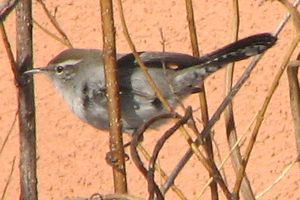
El Bosque
Polioptila caerulea
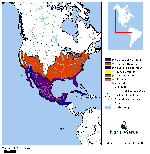
Enlarge Map
External Sites:
Cornell
USGS
Image Search
Number of Individuals Observed:1
Myadestes townsendi
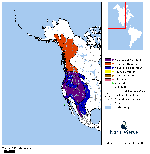
Enlarge Map
External Sites:
Cornell
USGS
Image Search
Gray all over with white on sides of tail.
Fluttery in flight, with cream-colored bands running the length of each wing on the underside.
Number of Individuals Observed:3
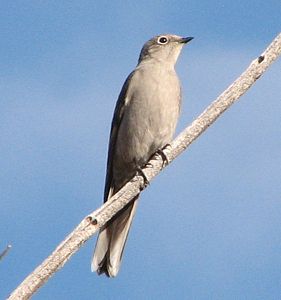
Turdus migratorius
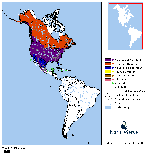
Enlarge Map
External Sites:
Cornell
USGS
Image Search
Note reddish breast, light colored bill and large white split eye-ring.
Number of Individuals Observed:1
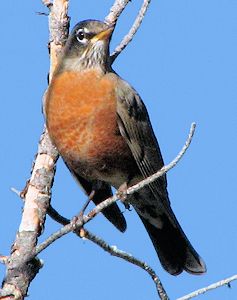
El Bosque
Vermivora virginiae
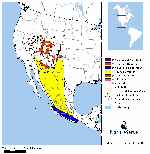
Enlarge Map
External Sites:
Cornell
USGS
Image Search
Number of Individuals Observed:1
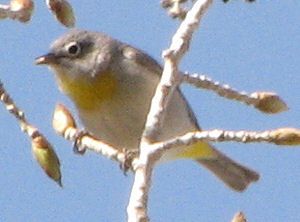
Ojo Sarco
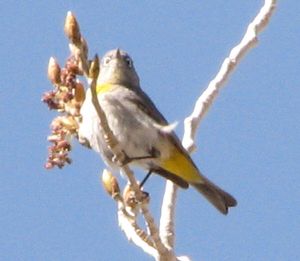
Ojo Sarco
Dendroica nigrescens
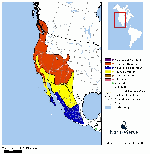
Enlarge Map
External Sites:
Cornell
USGS
Image Search
Number of Individuals Observed:1
Pipilo maculatus
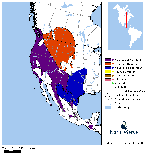
Enlarge Map
External Sites:
Cornell
USGS
Image Search
Occasionally you will see one at the edge of the road or briefly flying from one shrub to the next.
However, they regularly produce a contact call, a low growl.
Hear Contact Call
If you listen for that call and follow it, may be rewarded with a view of this lovely bird with a red eye.
Note white breast with rufous (reddish) flanks.
Lower Photo shows bird in its preferred habitat.
Number of Individuals Observed:12
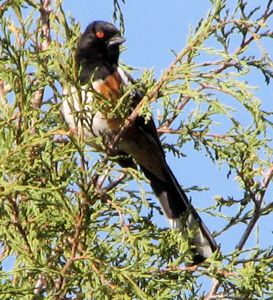
Arroyo la Mina
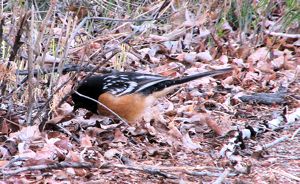
El Bosque Enlarge
Pipilo fuscus
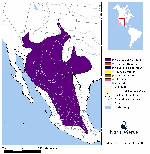
Enlarge Map
External Sites:
Cornell
USGS
Image Search
Note the buffy cap on head and buffy feathers under the tail.
Dark central spot visible on breast.
Number of Individuals Observed:1
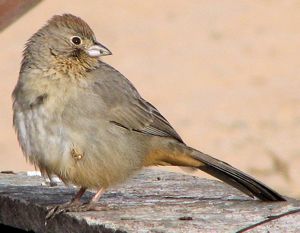
La Bolsa
Spizella passerina
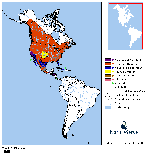
Enlarge Map
External Sites:
Cornell
USGS
Image Search
Number of Individuals Observed:2
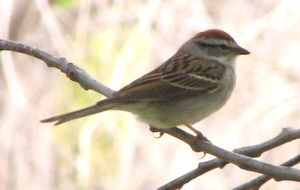
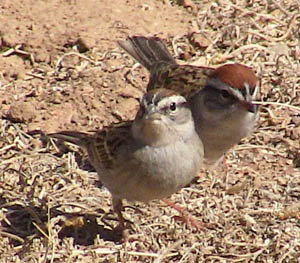
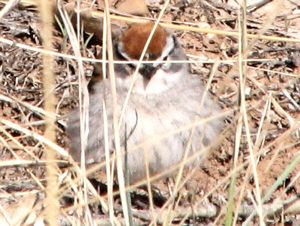
Pheucticus melanocephalus
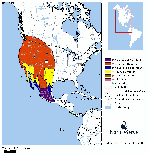
Enlarge Map
External Sites:
Cornell
USGS
Image Search
Number of Individuals Observed:4
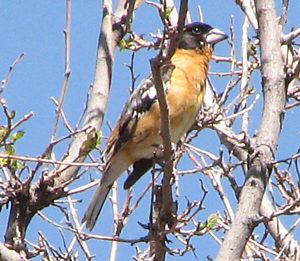
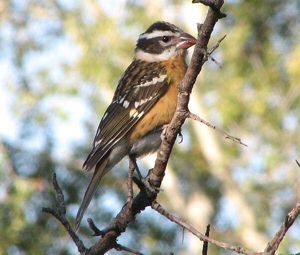
Passerina caerulea
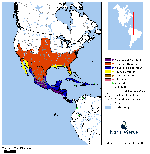
Enlarge Map
External Sites:
Cornell
USGS
Image Search
Number of Individuals Observed:1
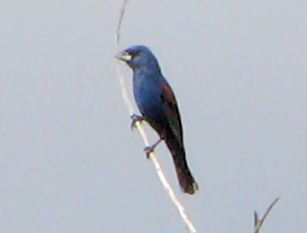
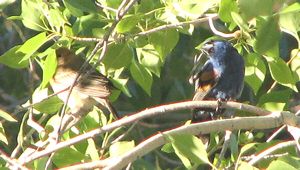
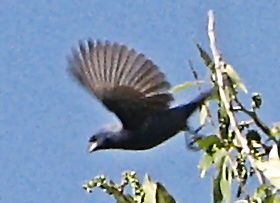
Carpodacus mexicanus
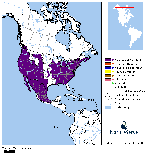
Enlarge Map
External Sites:
Cornell
USGS
Image Search
Male (upper picture) is easily identified by red plumage on head, throat, breast and rump.
Female (lower photo) does not have red.
Both sexes have streaking on breast, belly and flanks.
Number of Individuals Observed:11
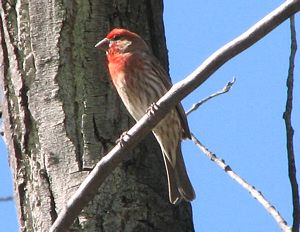
Arroyo La Mina
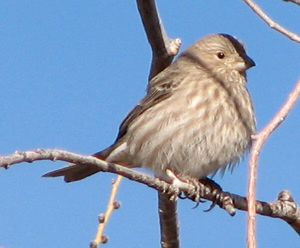
Arroyo La Mina
Carduelis psaltria
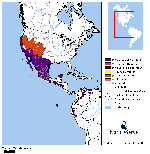
Enlarge Map
External Sites:
Cornell
USGS
Image Search
Number of Individuals Observed:6
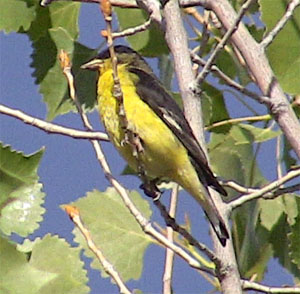
Dixon - June 7, 2014
